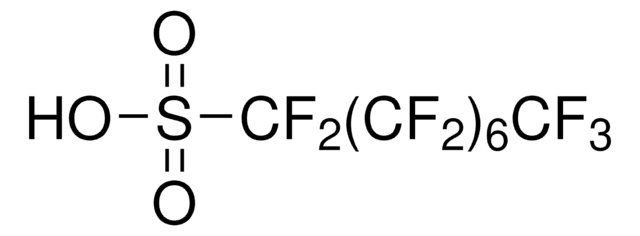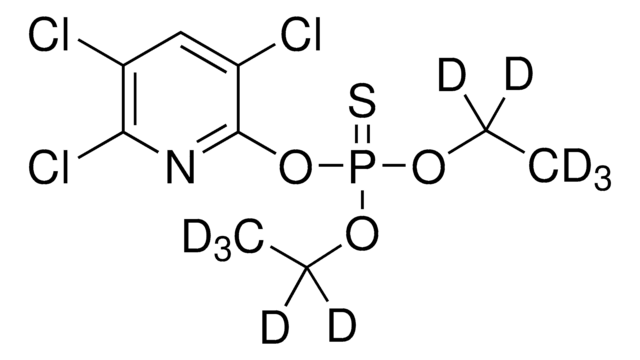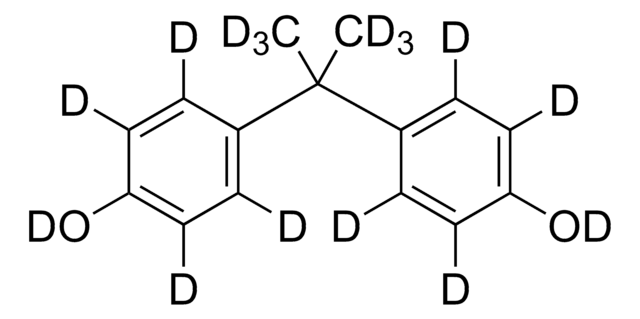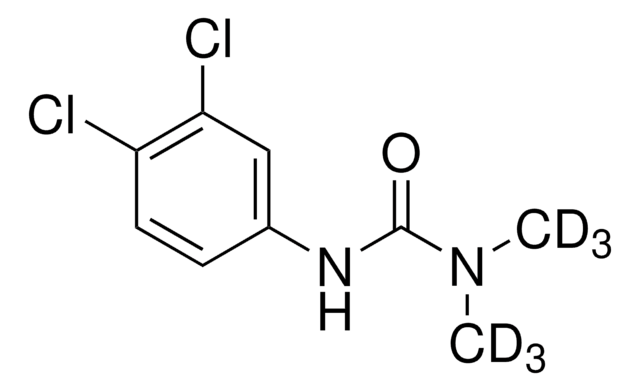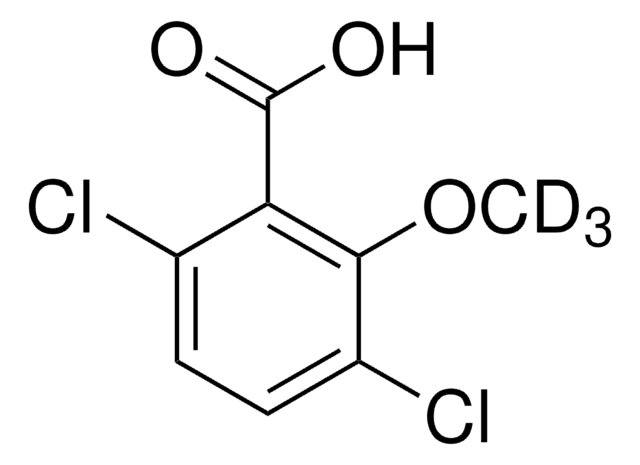34053
Atrazine-d5
PESTANAL®, analytical standard
Sinonimo/i:
2-Chloro-4-pentadeuteroethylamino-6-isopropylamino-1,3,5-triazine
About This Item
Prodotti consigliati
Grado
analytical standard
Livello qualitativo
Nome Commerciale
PESTANAL®
Durata
limited shelf life, expiry date on the label
tecniche
HPLC: suitable
gas chromatography (GC): suitable
applicazioni
agriculture
environmental
Formato
neat
Spostamento di massa
M+5
Stringa SMILE
[2H]C([2H])([2H])C([2H])([2H])Nc1nc(Cl)nc(NC(C)C)n1
InChI
1S/C8H14ClN5/c1-4-10-7-12-6(9)13-8(14-7)11-5(2)3/h5H,4H2,1-3H3,(H2,10,11,12,13,14)/i1D3,4D2
MXWJVTOOROXGIU-SGEUAGPISA-N
Descrizione generale
Applicazioni
determination of atrazine in water and soil samples using isotope dilution gas chromatography coupled with mass spectrometry.
Atrazine-d5 may also be used as an internal standard for the estimation of atrazine in water samples using solid-phase extraction and polar organic chemical integrative samplers (POCIS) followed by liquid chromatography with electrospray ionization-tandem mass spectrometry.(LC-ESI-MS/MS).
Note legali
Prodotti correlati
Avvertenze
Warning
Indicazioni di pericolo
Consigli di prudenza
Classi di pericolo
Aquatic Acute 1 - Aquatic Chronic 1 - Skin Sens. 1 - STOT RE 2 Oral
Organi bersaglio
Heart
Codice della classe di stoccaggio
11 - Combustible Solids
Classe di pericolosità dell'acqua (WGK)
WGK 3
Punto d’infiammabilità (°F)
Not applicable
Punto d’infiammabilità (°C)
Not applicable
Dispositivi di protezione individuale
Eyeshields, Gloves, type N95 (US)
Scegli una delle versioni più recenti:
Possiedi già questo prodotto?
I documenti relativi ai prodotti acquistati recentemente sono disponibili nell’Archivio dei documenti.
I clienti hanno visto anche
Il team dei nostri ricercatori vanta grande esperienza in tutte le aree della ricerca quali Life Science, scienza dei materiali, sintesi chimica, cromatografia, discipline analitiche, ecc..
Contatta l'Assistenza Tecnica.